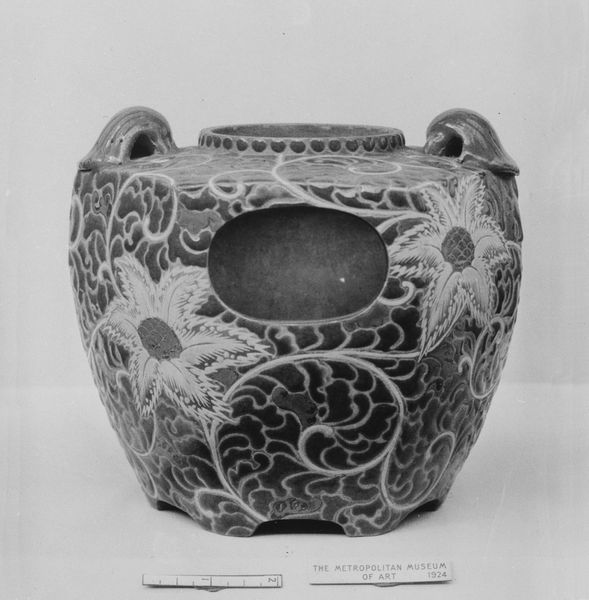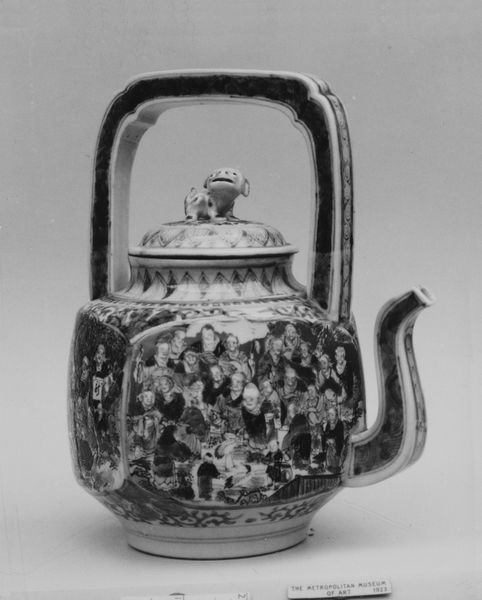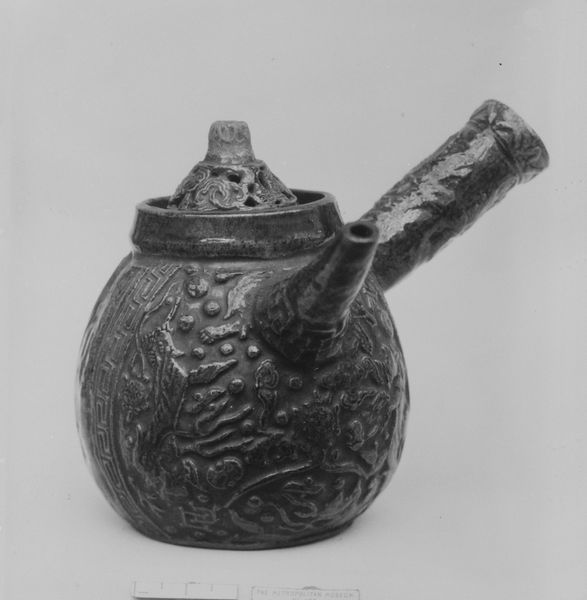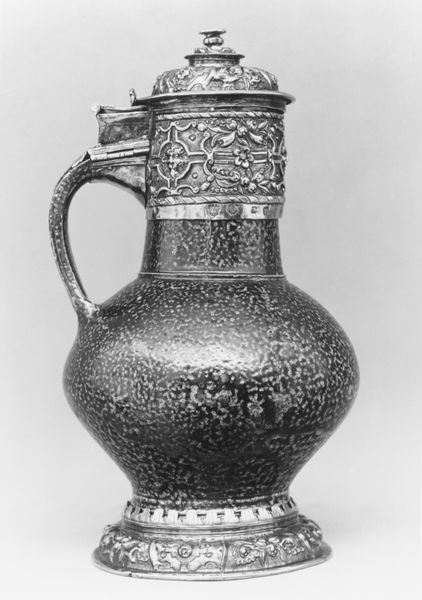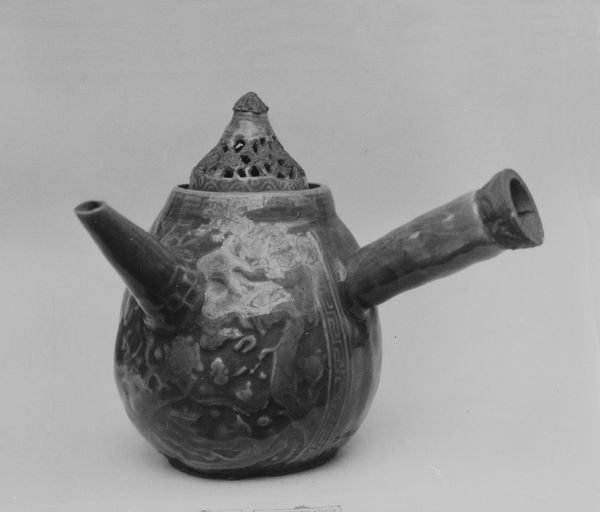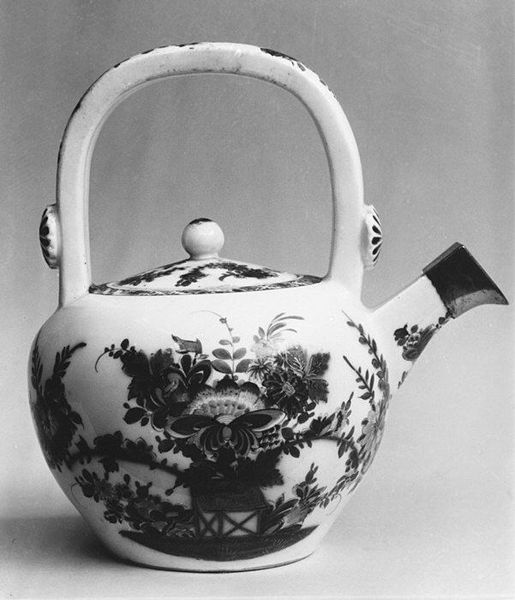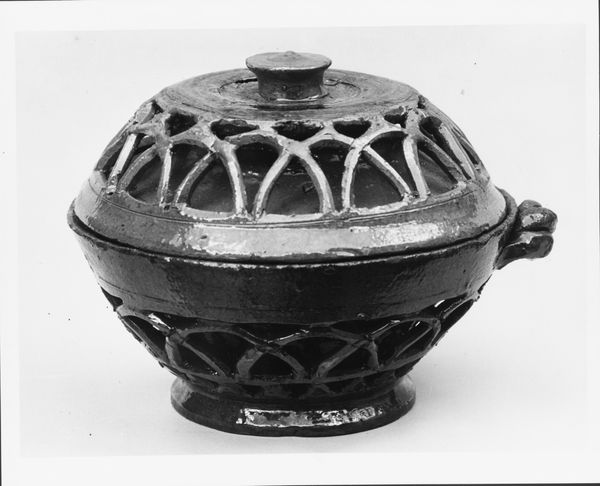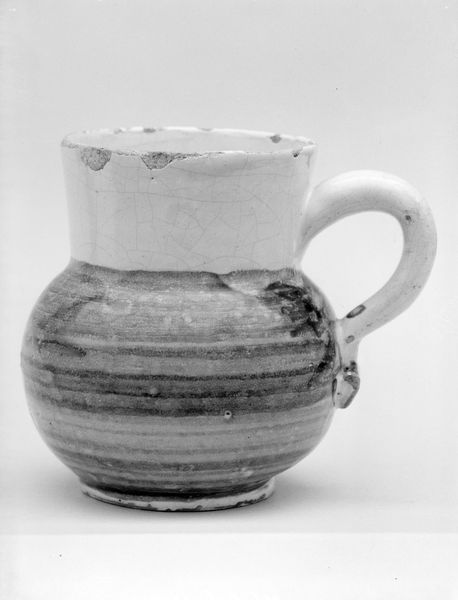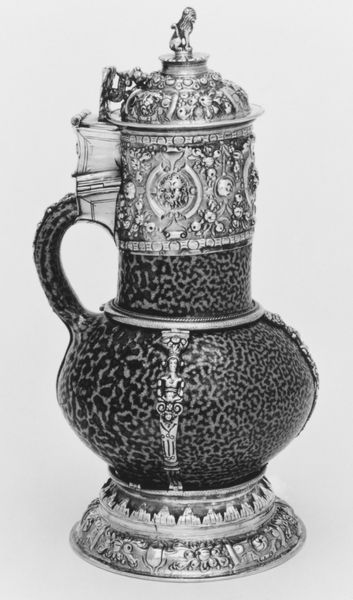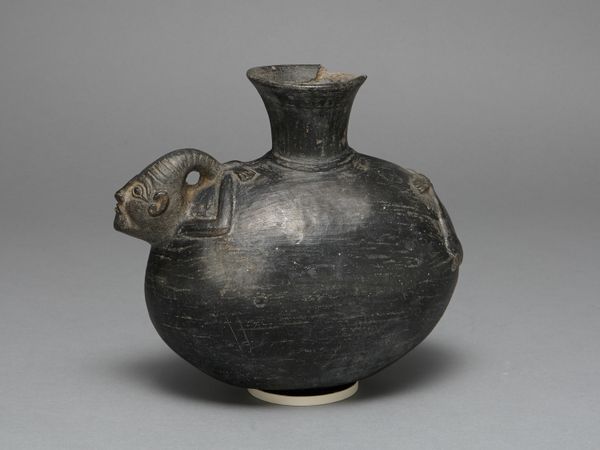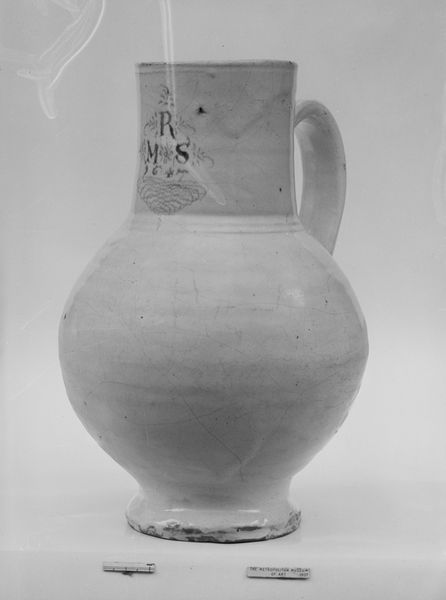
Sake Ewer (Chōshi) with Phoenixes and Auspicious Patterns 1800 - 1849
0:00
0:00
ceramic
#
asian-art
#
ceramic
#
japan
Dimensions: H. 5 1/4 in. (13.3 cm); W. at spout 6 3/8 in. (16.2 cm); Diam. 5 in. (12.7 cm); Diam. of base 3 in. (7.6 cm)
Copyright: Public Domain
This is a sake ewer, or chōshi, made in Japan by Eiraku Hozen, who lived from 1795 to 1854. It is decorated with phoenixes and auspicious patterns. The cultural significance of this piece lies in its symbolism. Phoenixes, often associated with the empress, embody rebirth and good fortune. Auspicious patterns, such as stylized waves, convey wishes for longevity. Made during the Edo and Meiji periods, objects such as this reflect the intricate social hierarchy where the elite would enjoy sake from ornate vessels. It also tells the story of the artistic networks within Kyoto's craft communities that would serve the upper classes. Understanding this sake ewer involves delving into Japan’s rich social and artistic history. Scholarly articles and museum archives provide valuable information. The meaning of art lies in its social and institutional context.
Comments
No comments
Be the first to comment and join the conversation on the ultimate creative platform.
